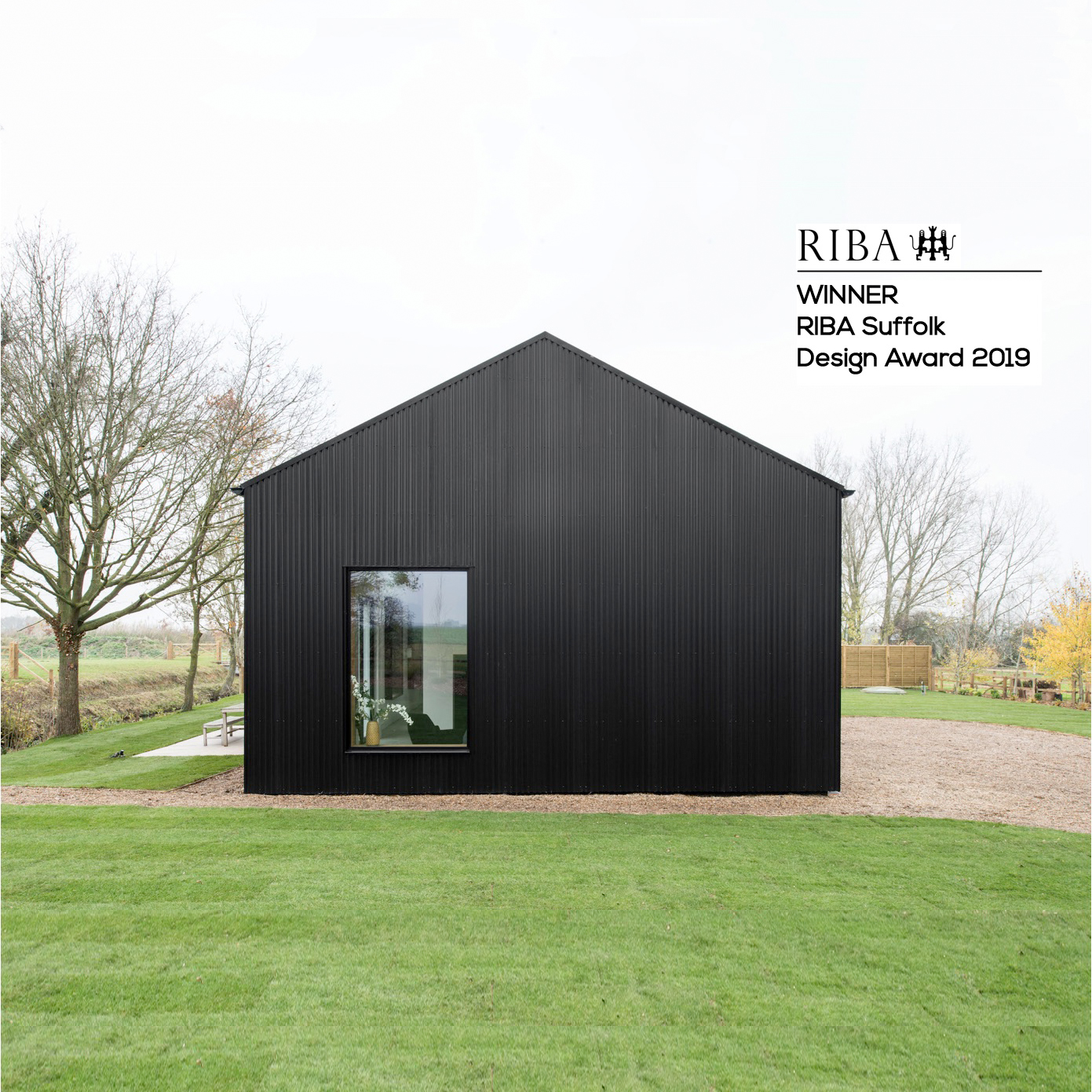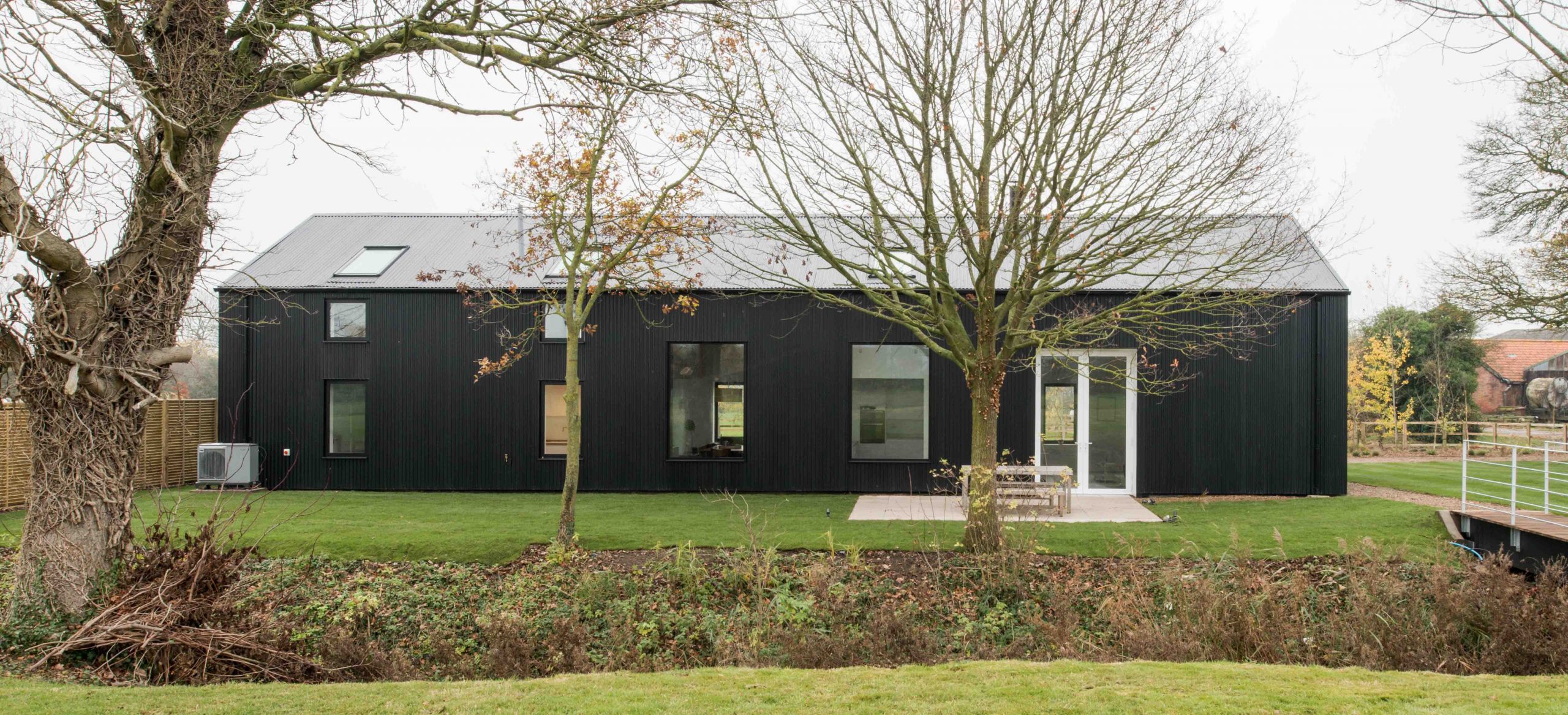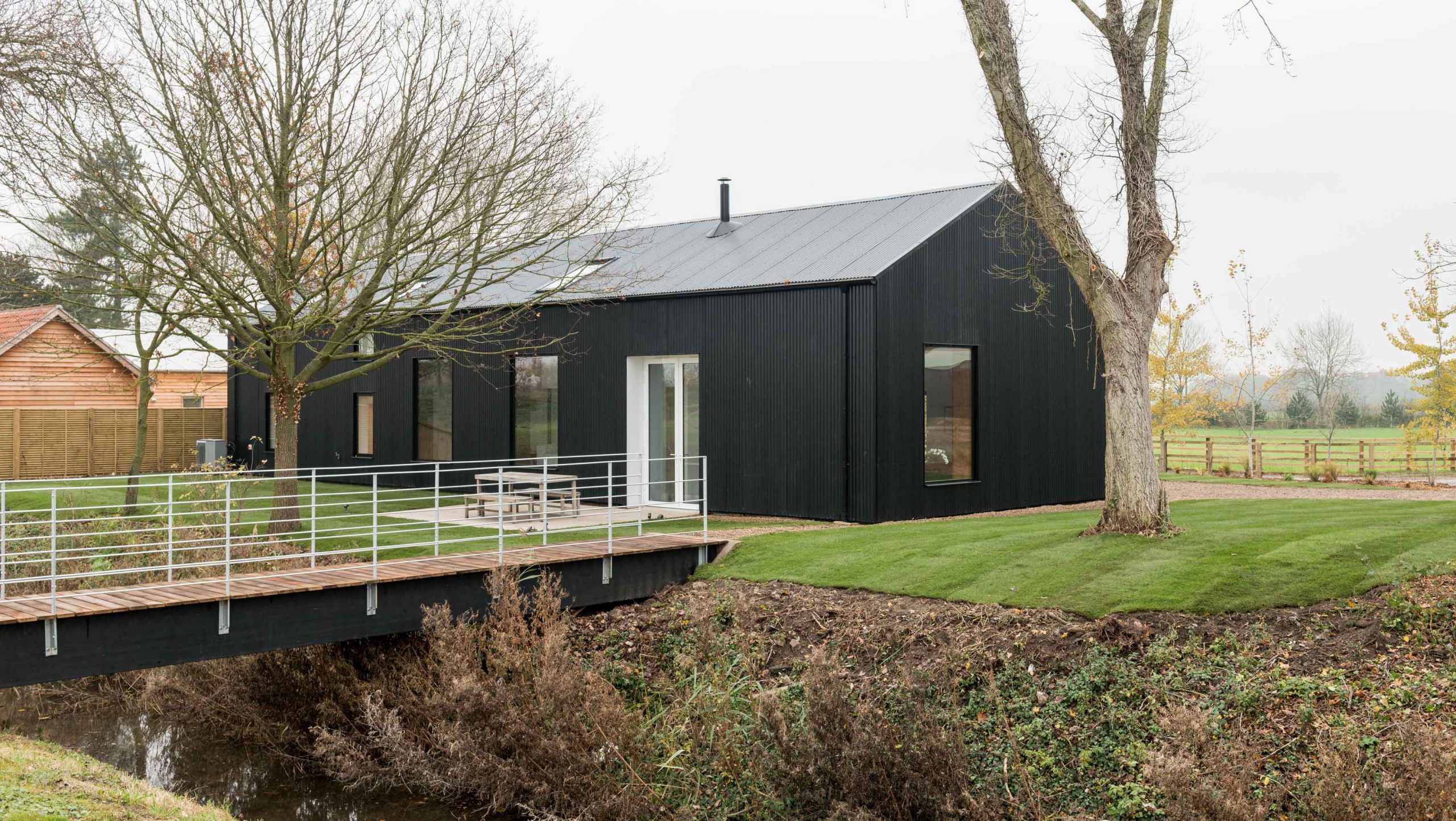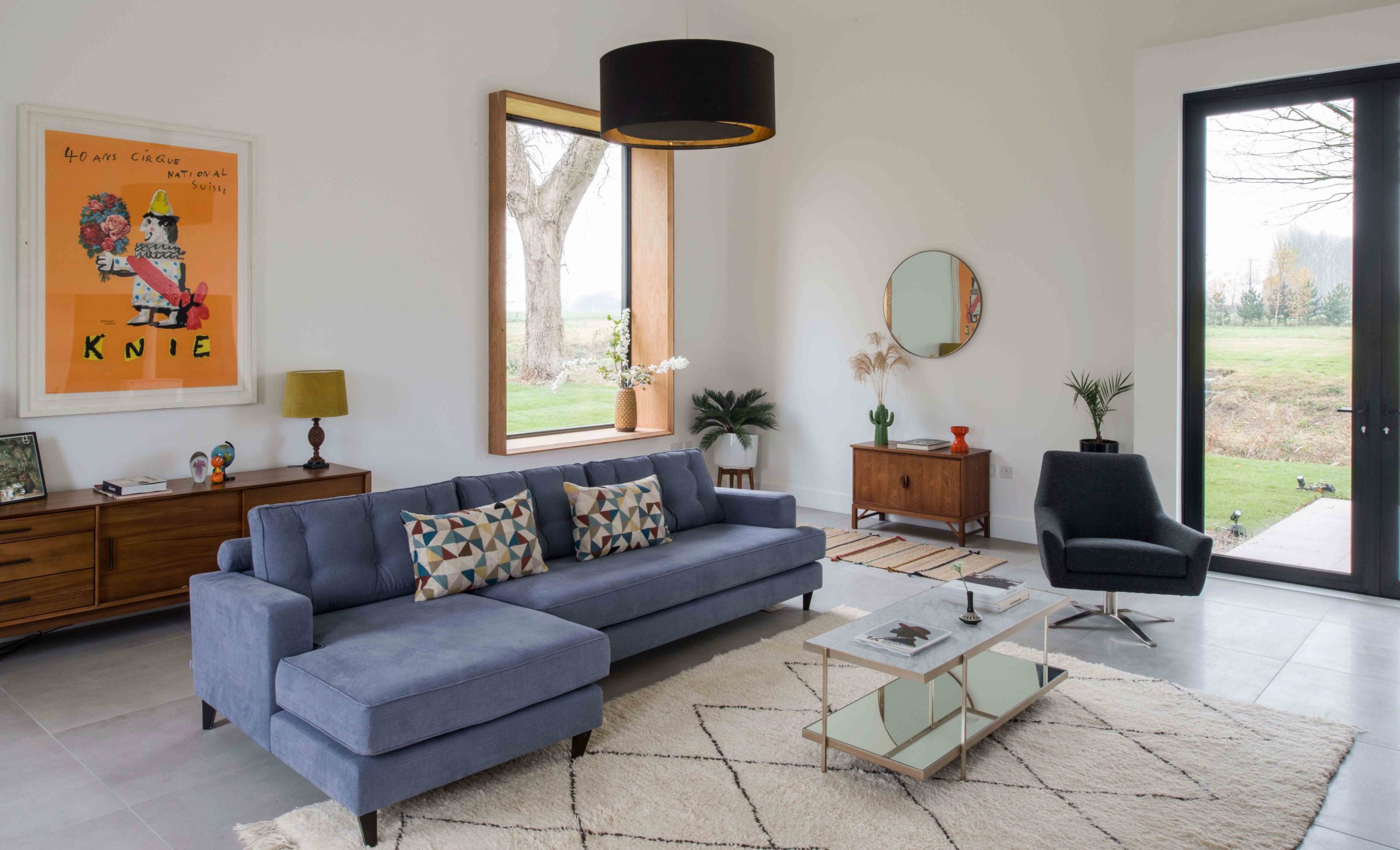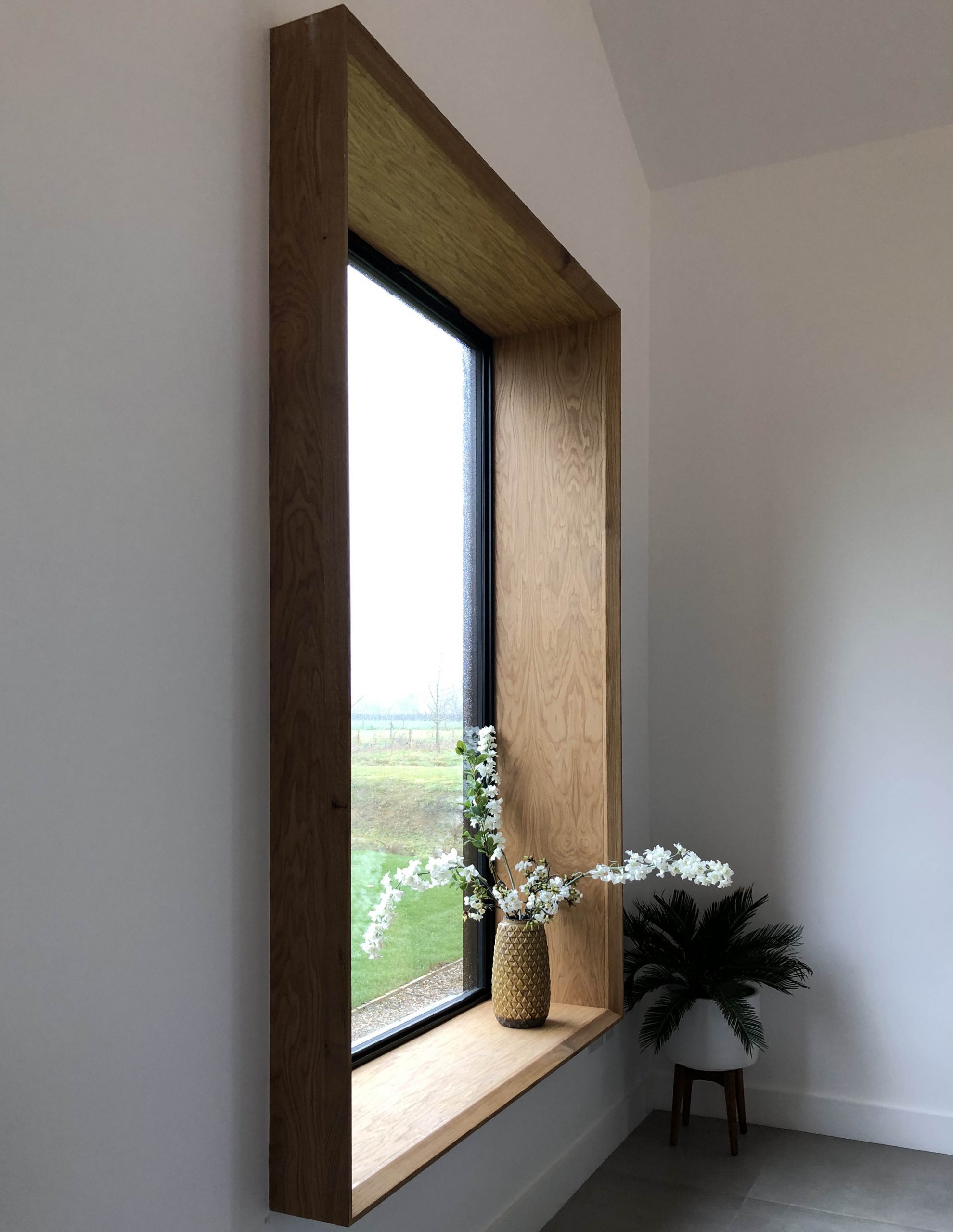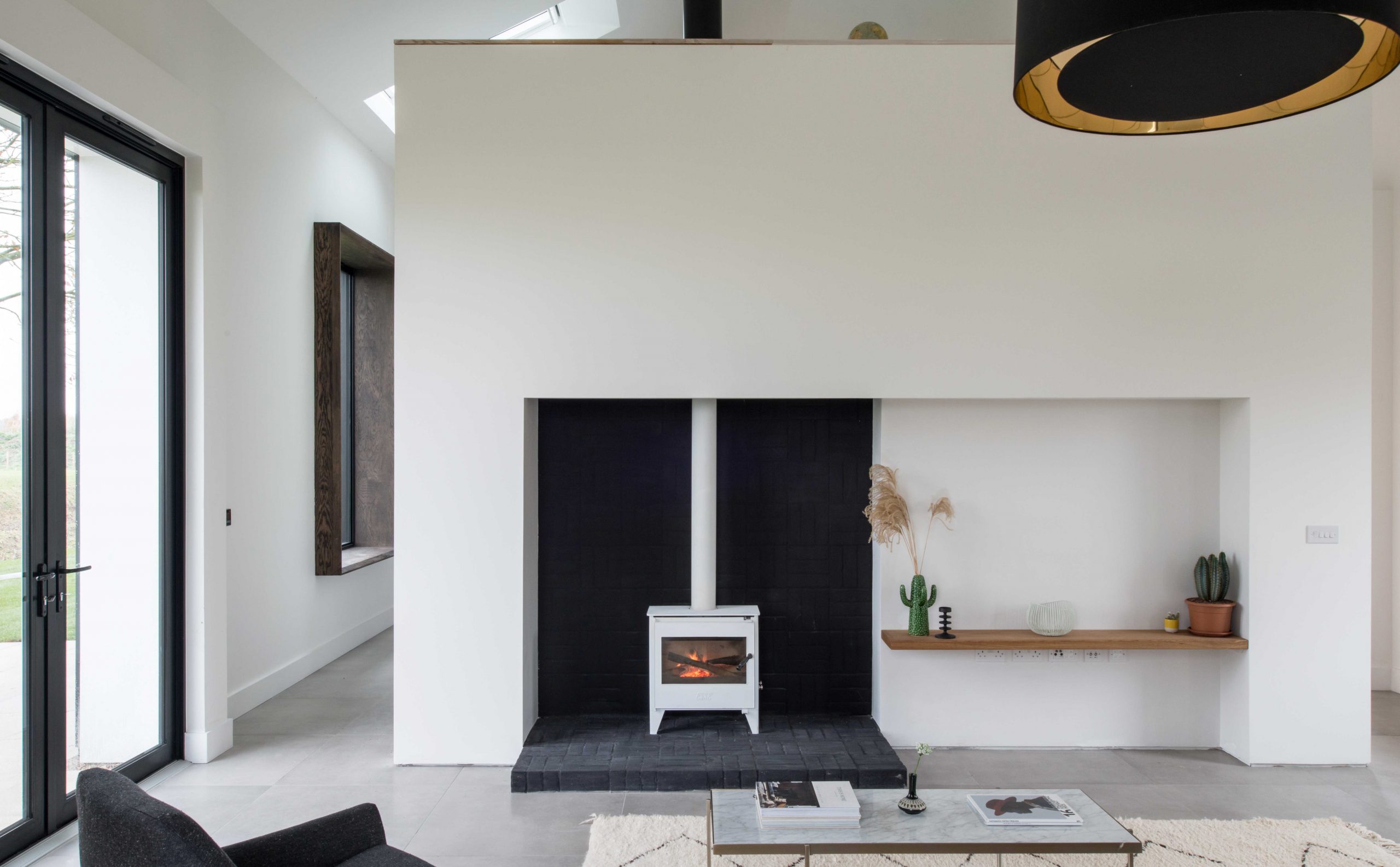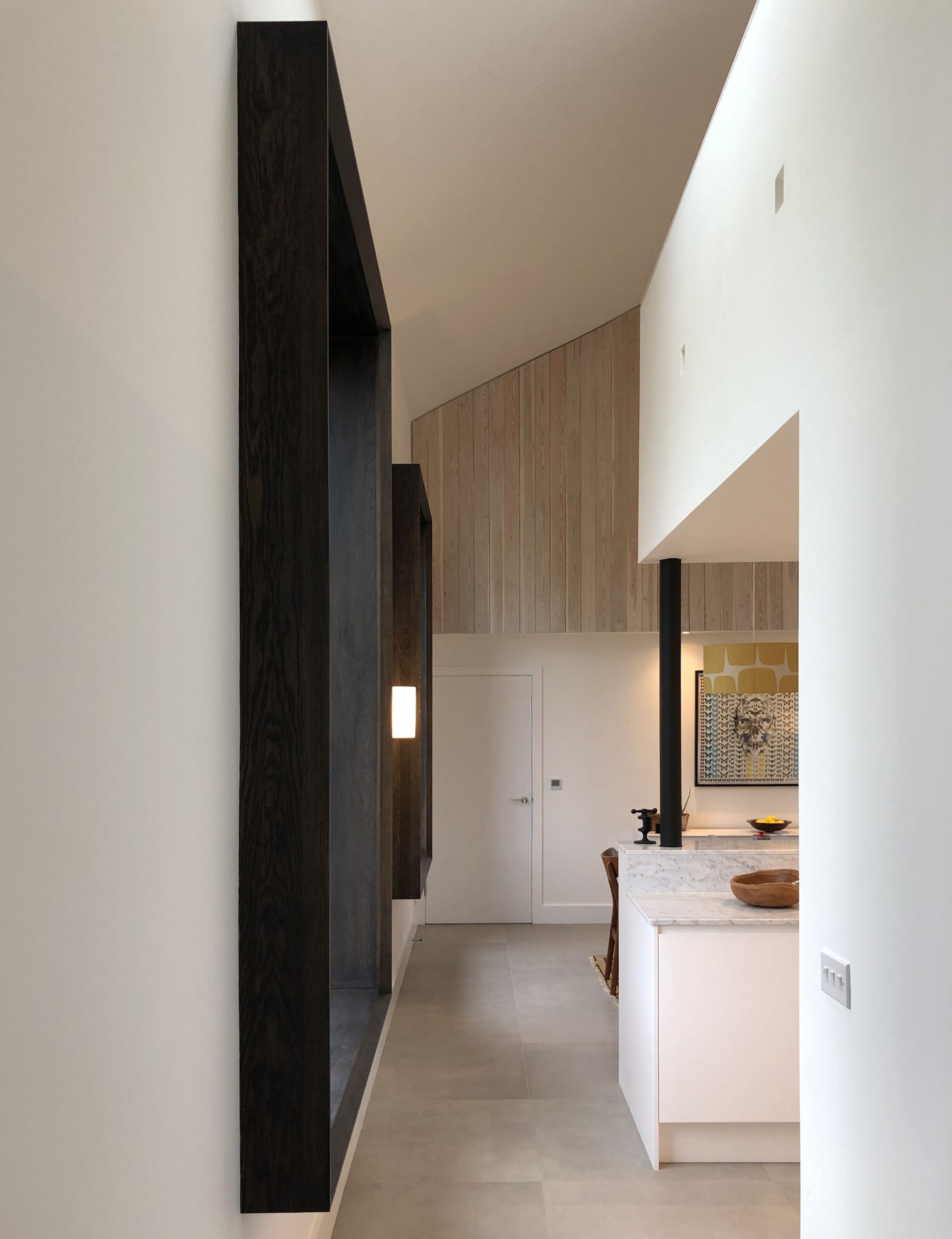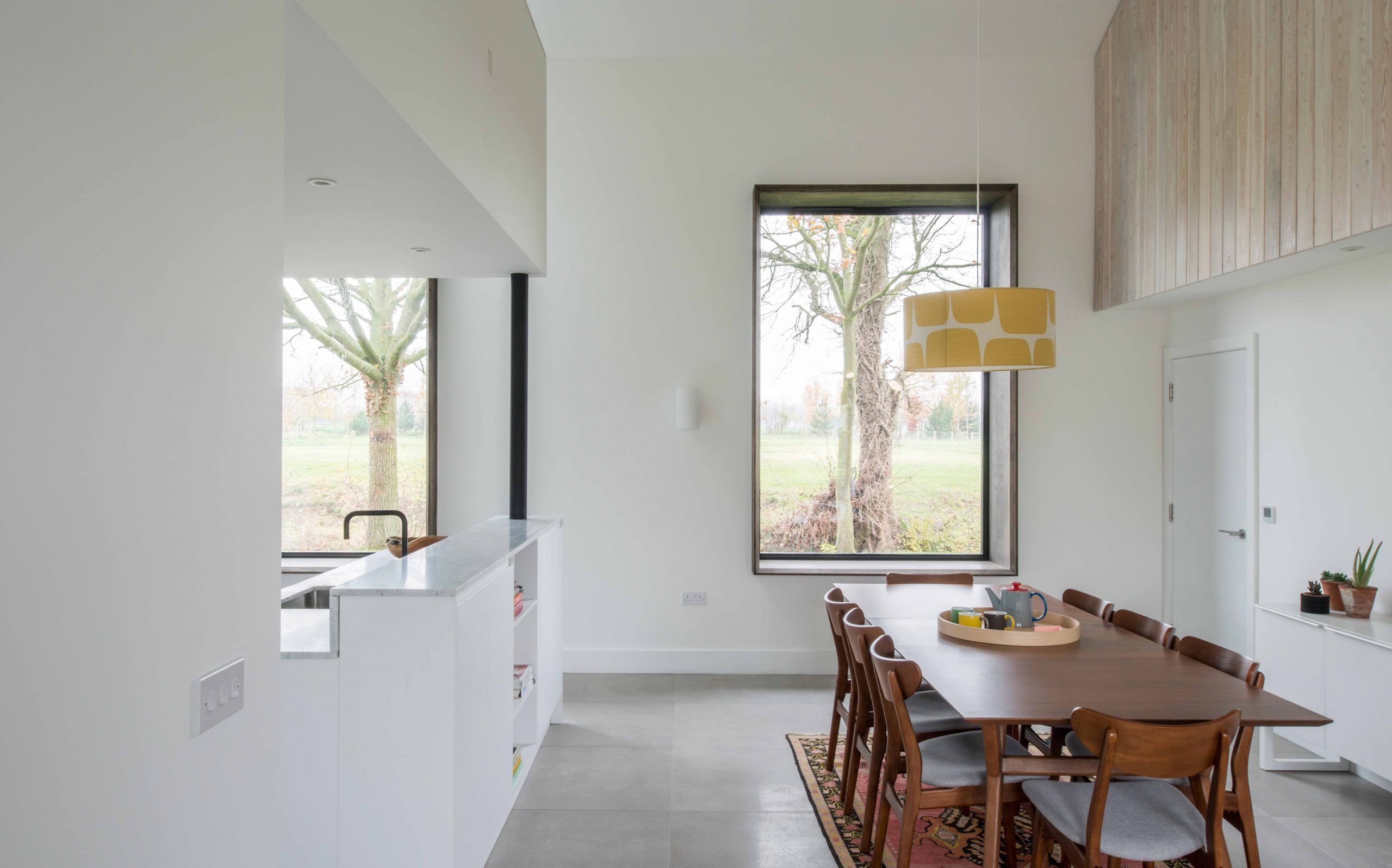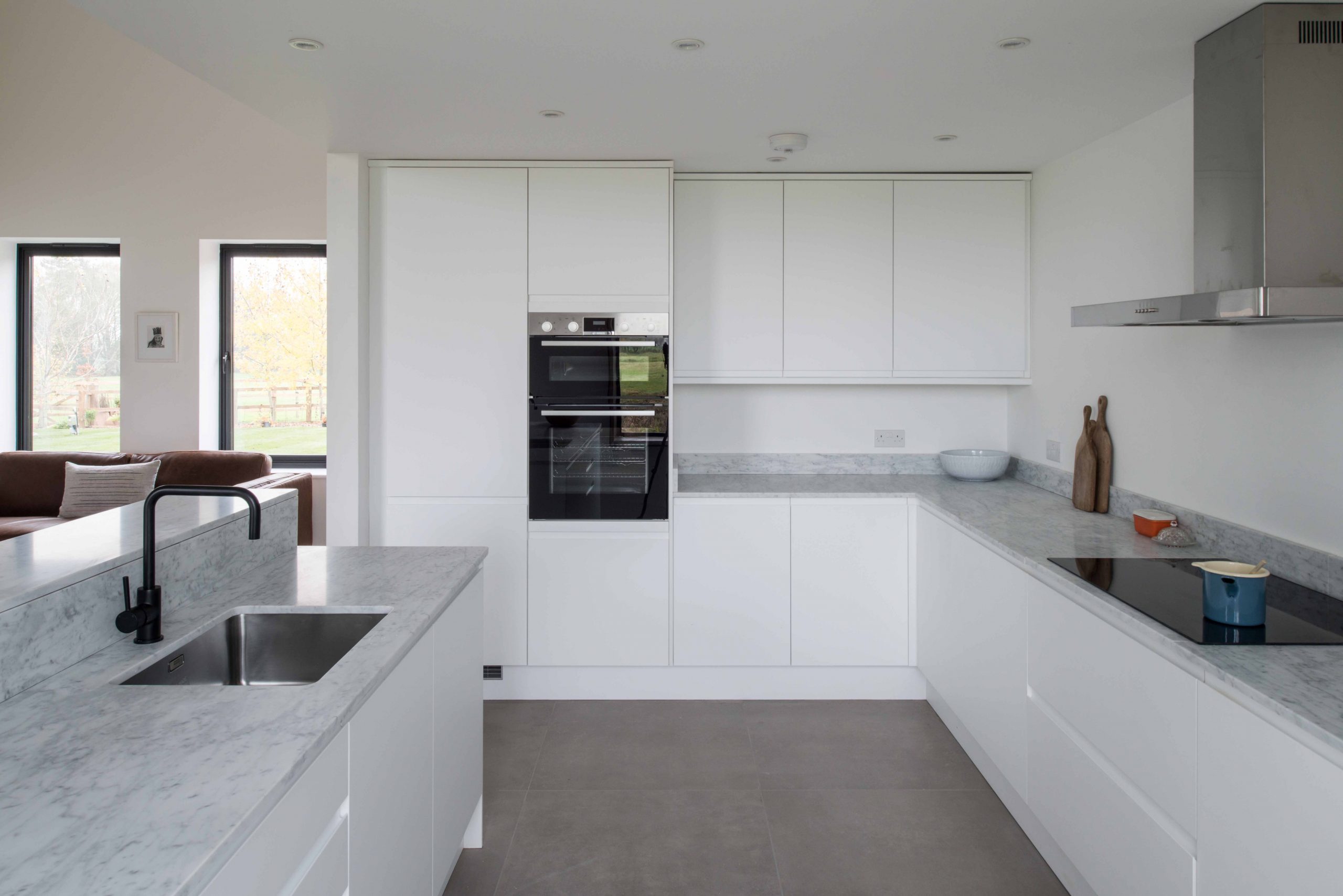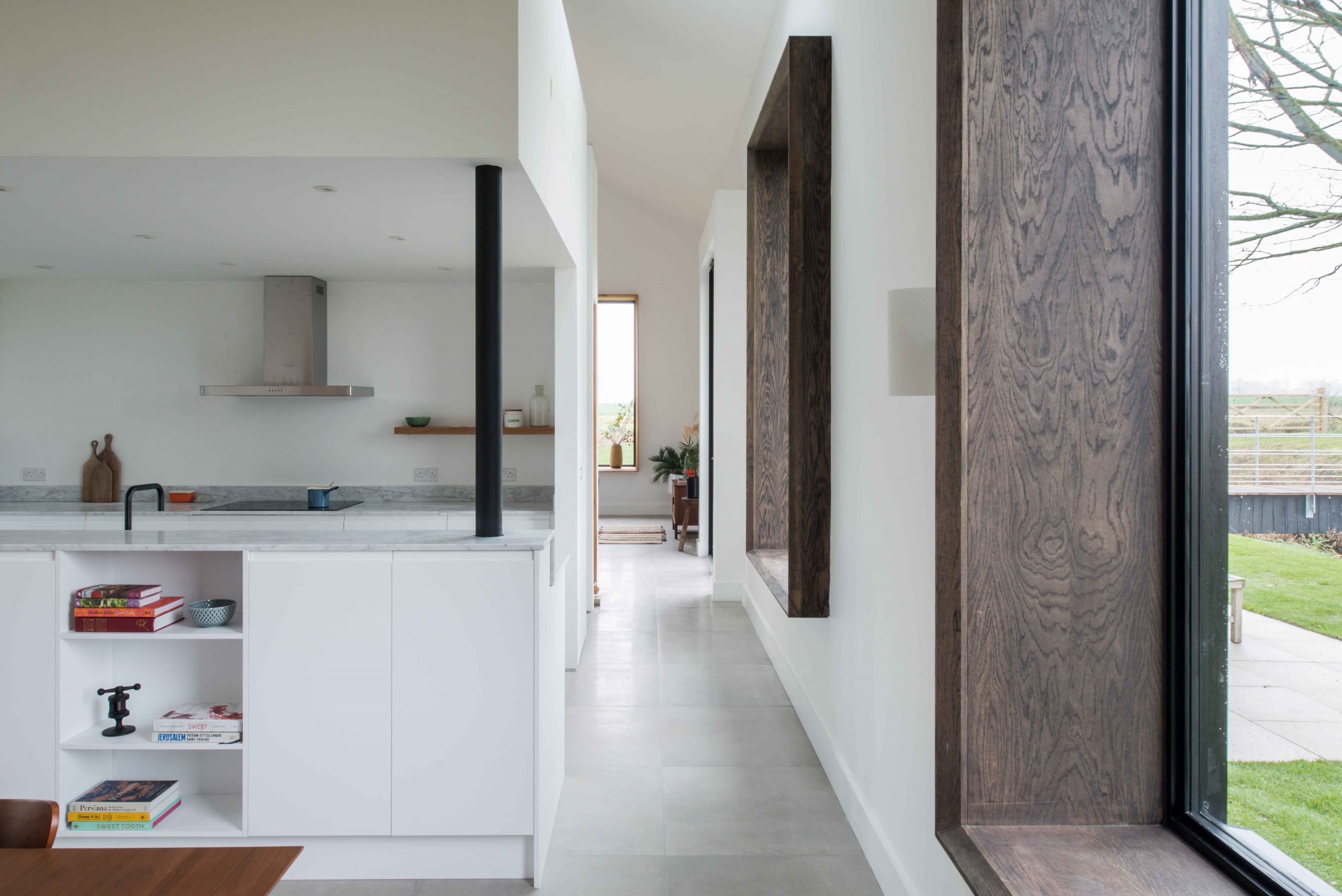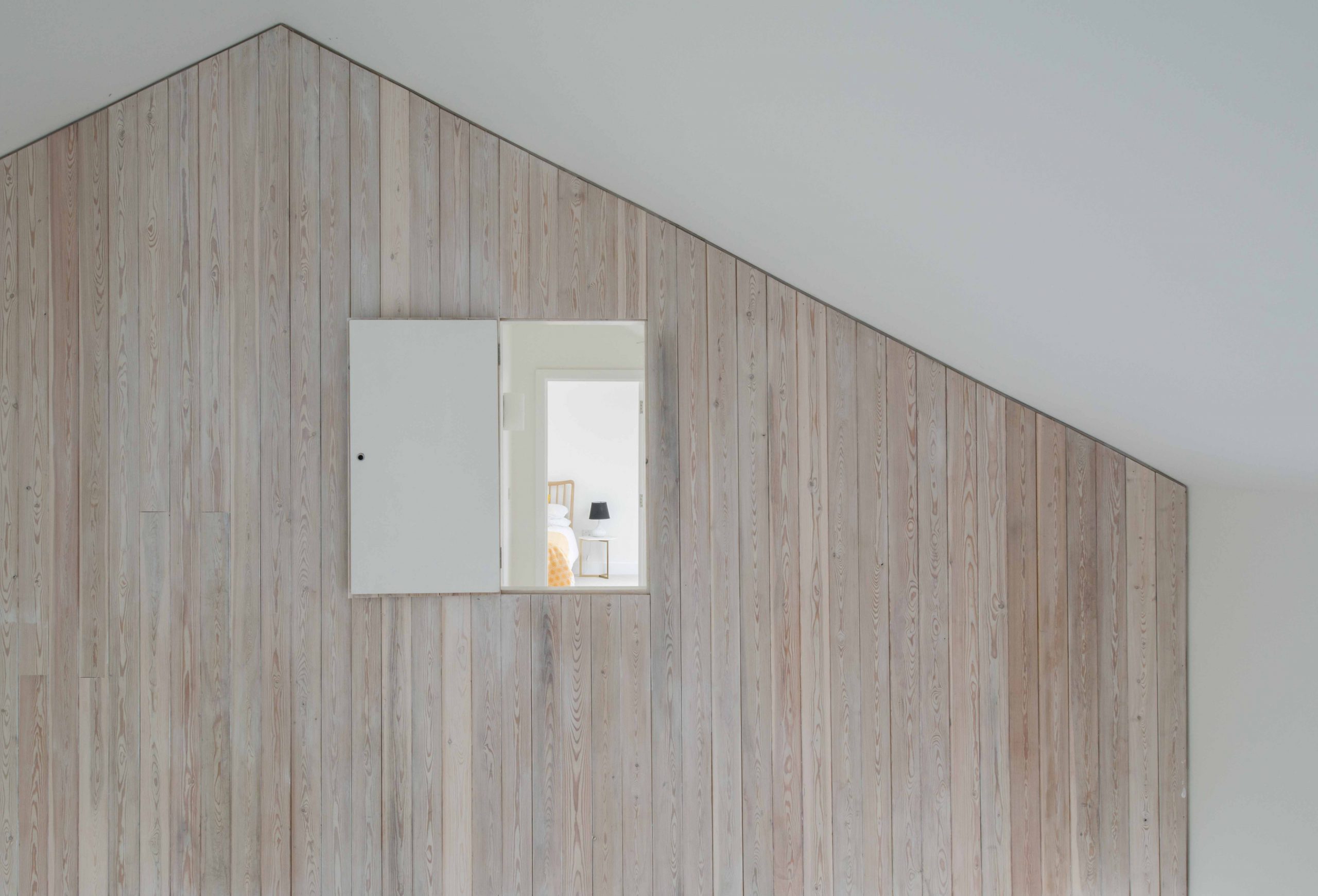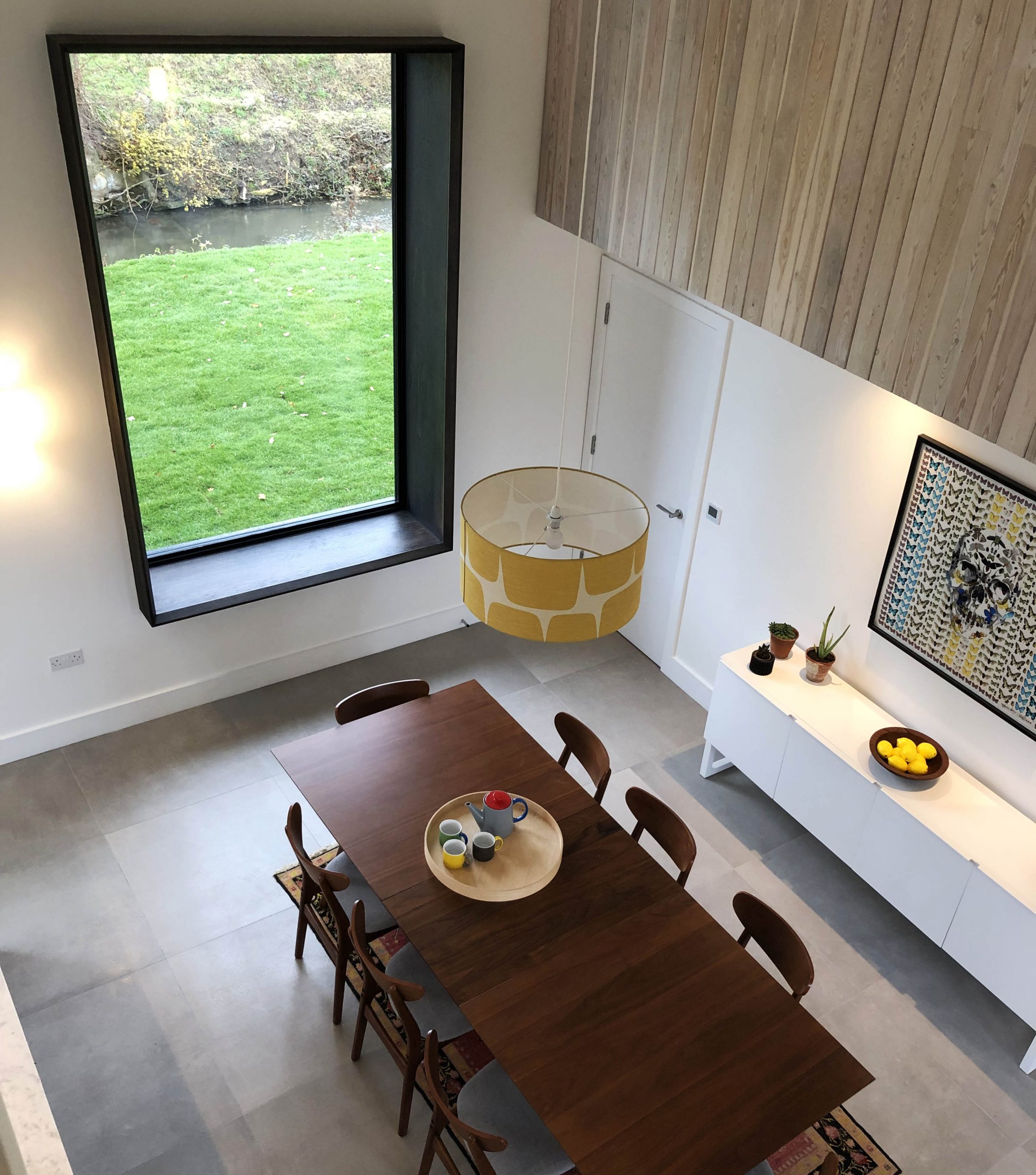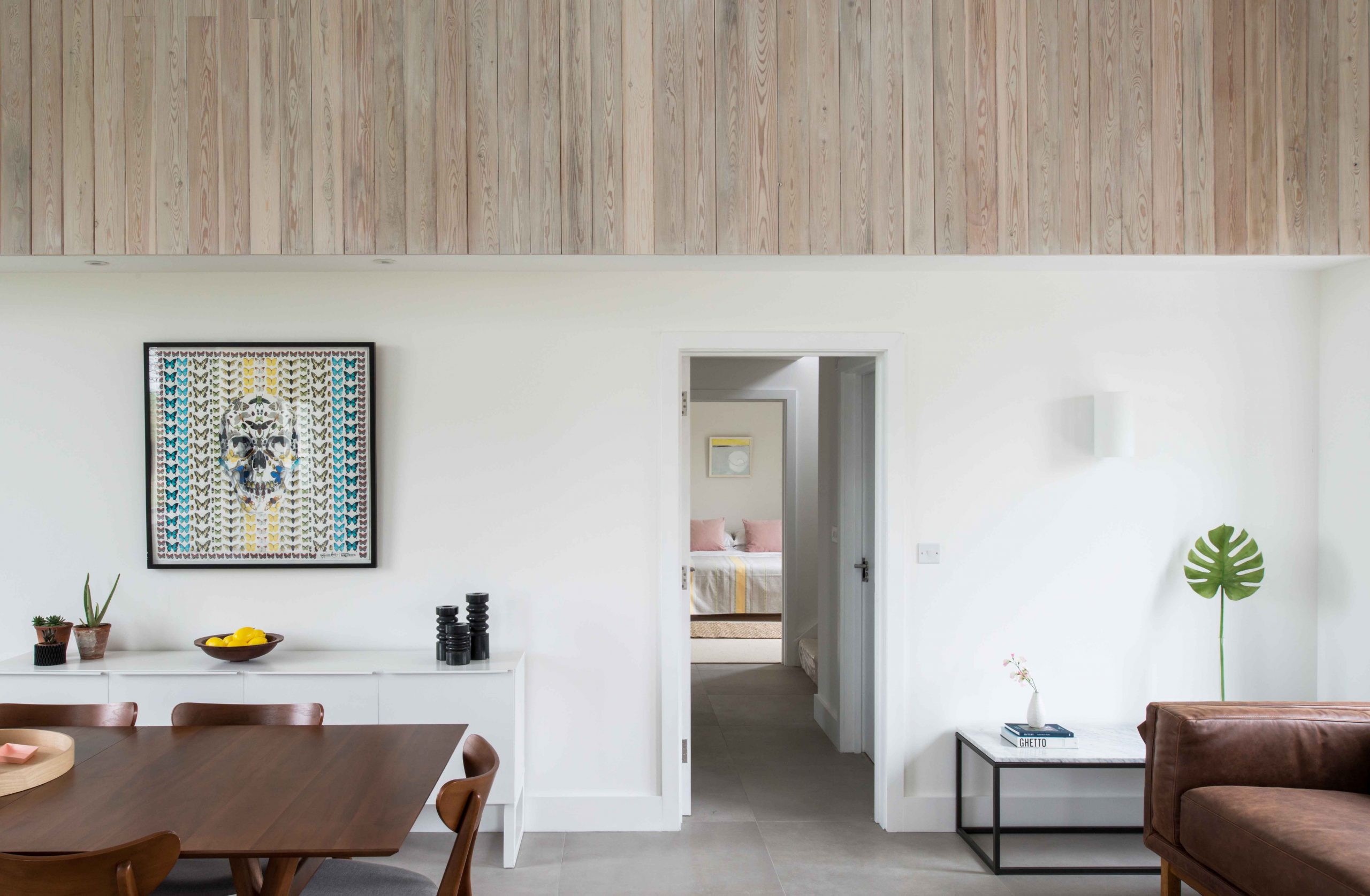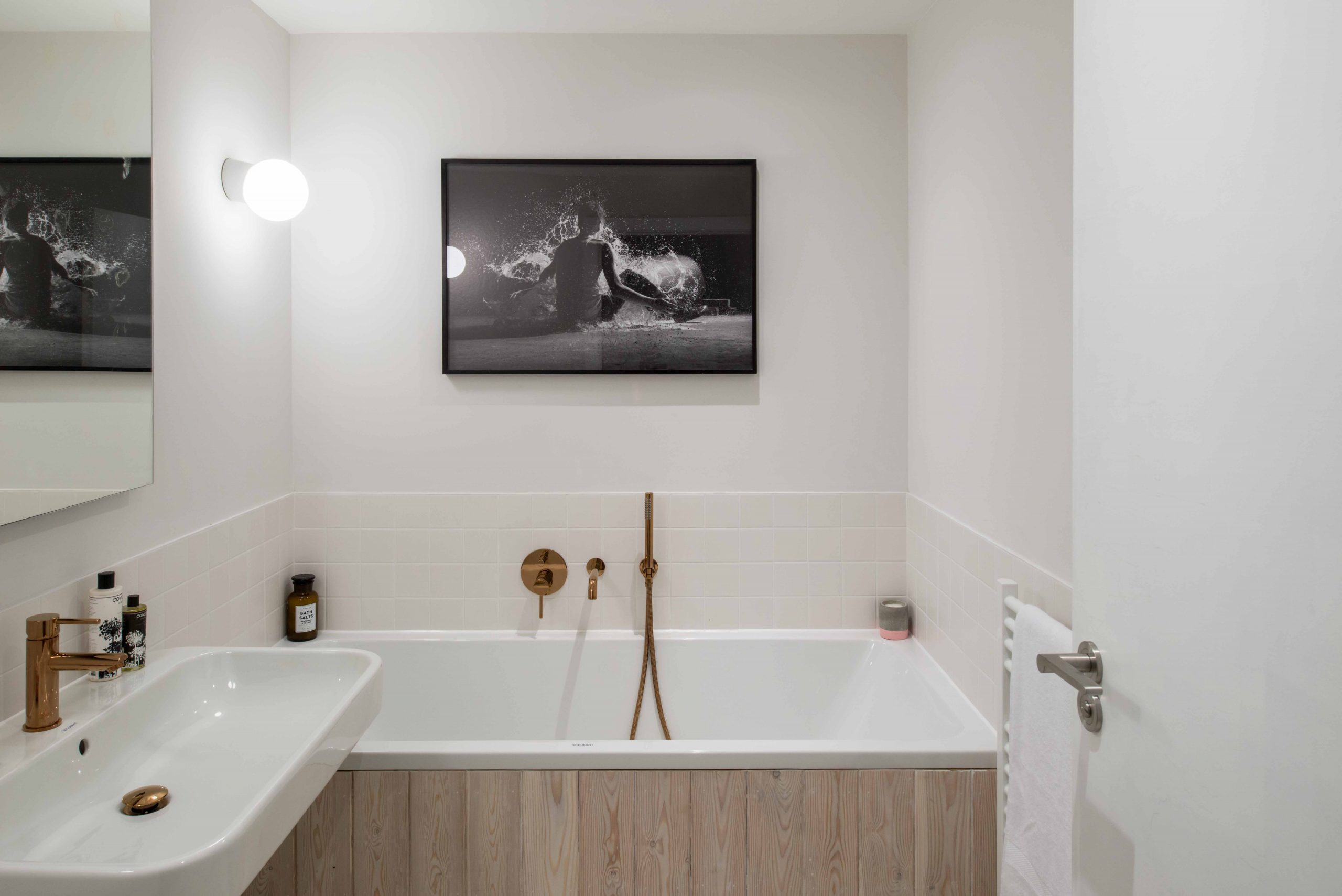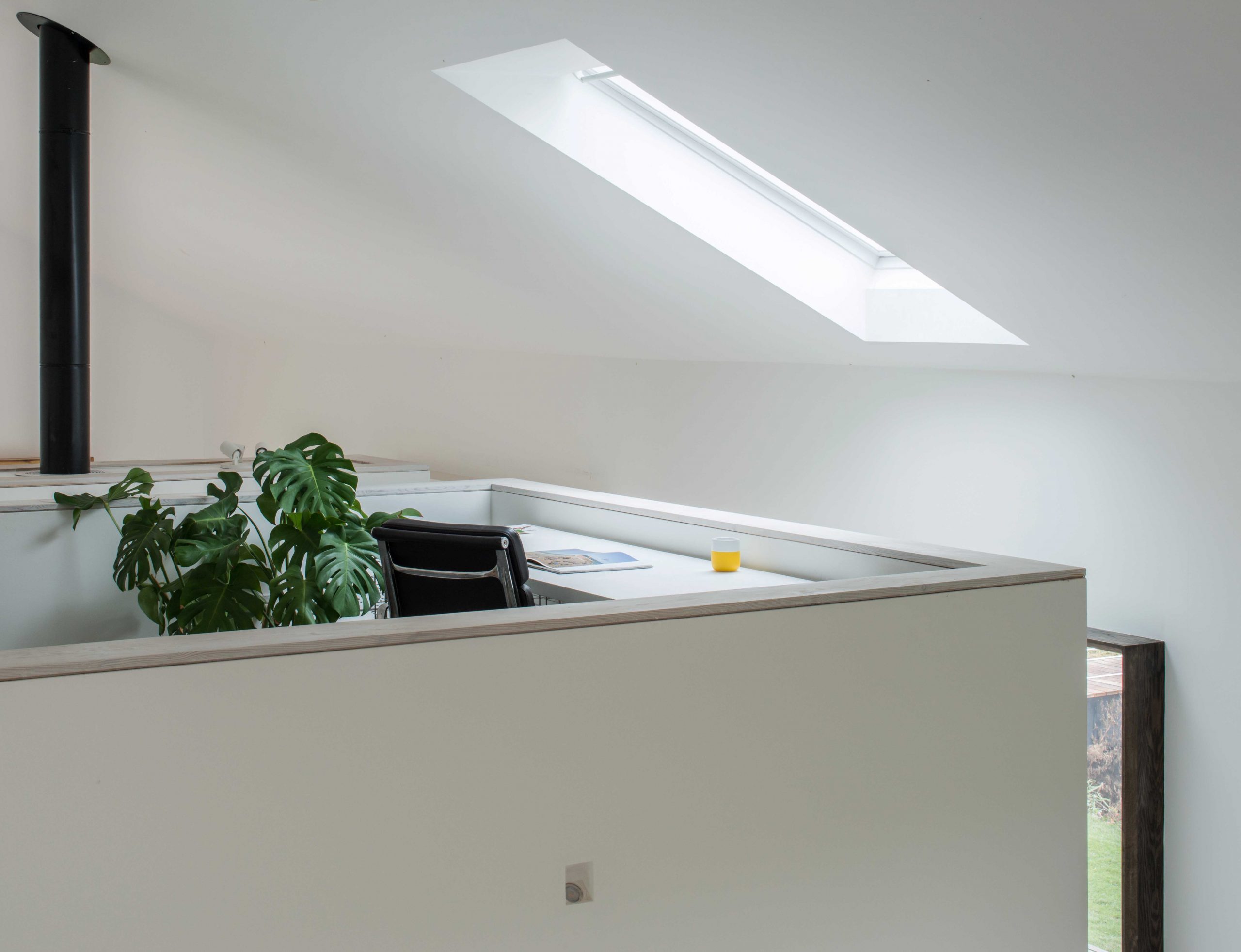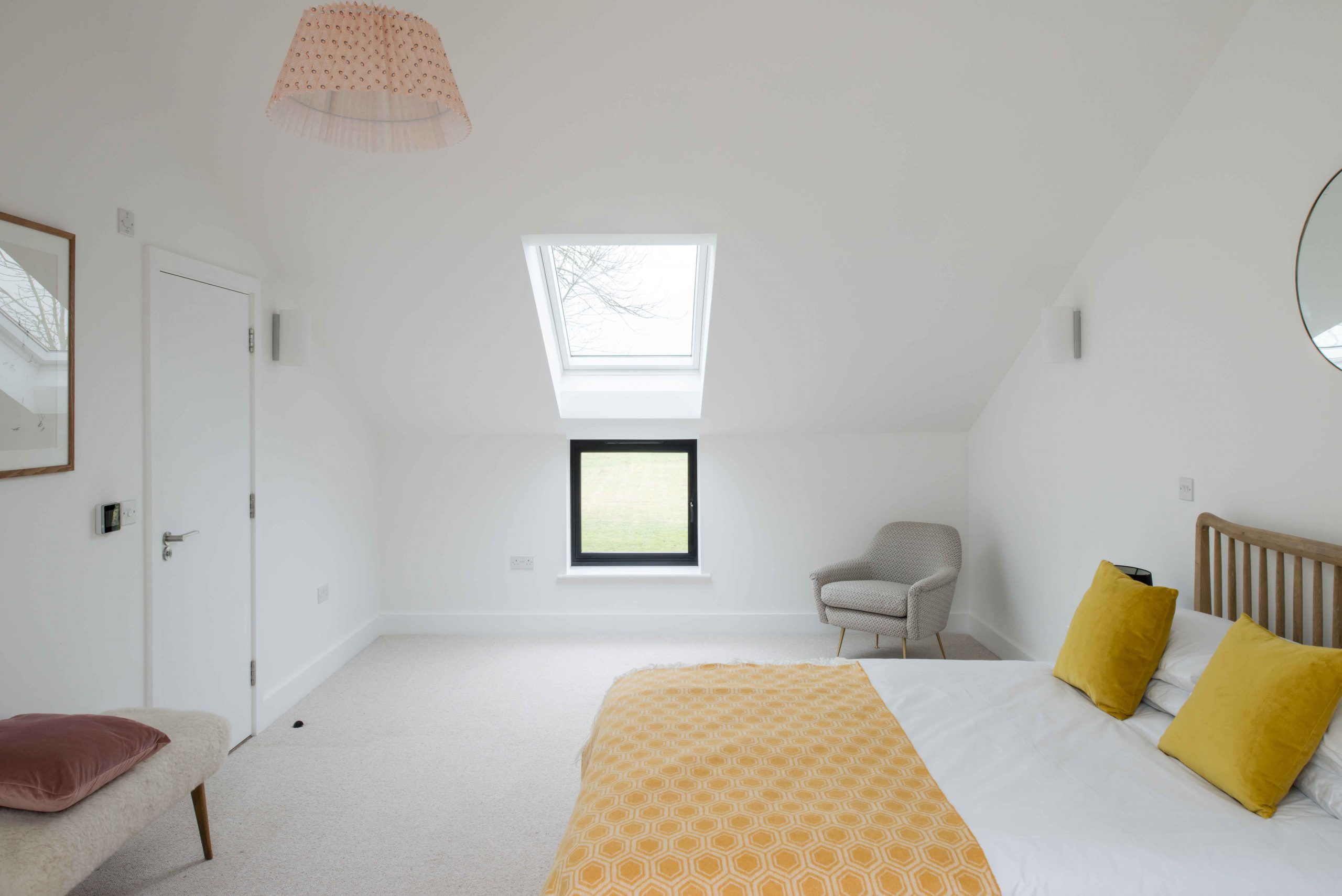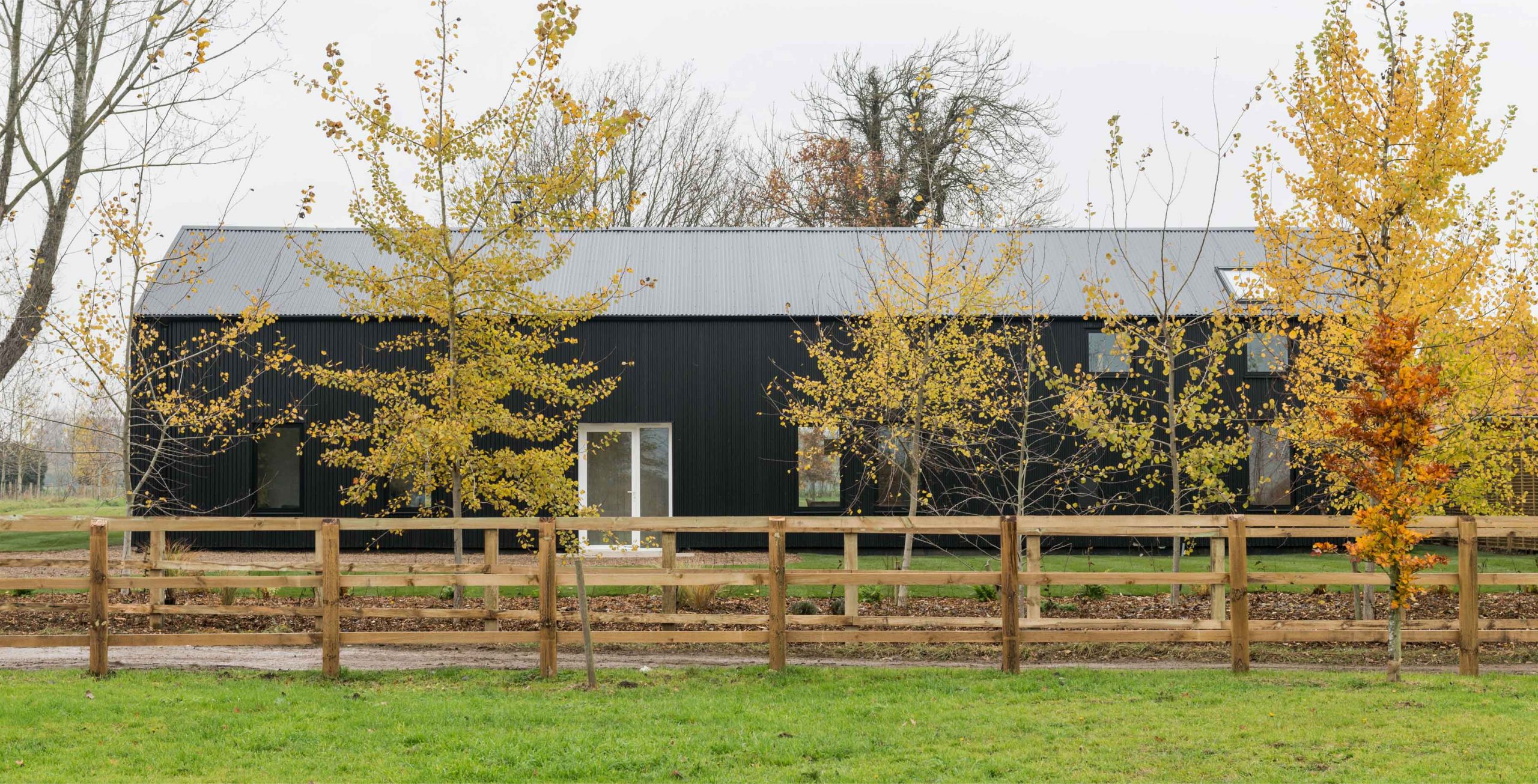Tinkers Barn
Project overview
The project was a permitted development conversion of an agricultural barn into a family house. This is one of 2 barns in the grounds of the estate of Old Boyland Hall which dates back to the 13th century. It was commissioned by Nest Development and completed in November 2018 and won the RIBA Suffolk Design Award in May 2019.
Design and materials
The design for Tinkers barn embraces the simplicity of the black barn which is a traditional agricultural form. We were detailing with corrugated steel which is more often used in an industrial context and I was interested in exploring how to use that in a domestic setting.
We concentrated on refining the junctions (for example, the junction with the roof, the corners and the window openings) to provide a crisp, clean aesthetic.
We deliberately chose black for the external envelope to refer back to its agricultural origin and took the monochrome theme inside the barn with the choice of materials (for example, the black stained bricks on the fire surrounding the white wood burner and oak lined windows are stained black). Other internal finishes such as use of natural oak and limed larch provide texture and warmth to the scheme.
Renewable heat sources are included as the Barn is heated by underfloor heating coupled with an air source heat pump. Further, passive measures are incorporated into the design; the location of windows to give solar heat gain, concrete floors to provide thermal mass and a generally well insulated, air tight envelope.
Explanation of the design plan and internal layout
The introduction of the mezzanine office space and second staircase inserts a volume into the core of the building and allows the spaces around it to be naturally subdivided. The kitchen sits underneath the mezzanine study area. The compression of the hallways on each side contrasts with the expansiveness of the living and dining areas. This adds a sense of drama and invites the visitor in to the home with hints of what is around the corner.
The decision to make the volume freestanding ensures that the incredible sense of height and scale of the barn is retained. The sleeping wing has bedrooms on two levels; a playful opening from the upstairs bedroom wing provides views to the kitchen and dining area. The mezzanine itself offers long views across the barn; this gives an inward focus to the building against which the external landscape as seen through the tall windows becomes the backdrop.
Open plan living is very fashionable but should always be paired with areas that can be private or intimate, that can bring a sense of comfort, security and warmth. Thus, the internal plan provides for defined sleeping and living wings. I like houses that you can understand where to enter, where the public and private or semi-private spaces are. It means you know where you are, it provides certainty and makes for a comfortable home.
Comment on the approach to the glazing
Many such conversions will have floor to ceiling glazing along most of the rear elevation. However, here we wanted to retain the vertical emphasis in the glazing which adds to the sense of scale in the internal spaces, hence the living room doors are almost 3 meters high.
There is continuity of treatment between rooms, so the external openings relate to each other across the open plan space. In this context, floor to ceiling glazing would not have given the look I wanted to achieve.
Instead I have offered views out that are framed by the three oversized windows. They provide connection with the external landscape but balanced with the need for a sense of enclosure appropriate to a building to be used as a home.
Other Projects


